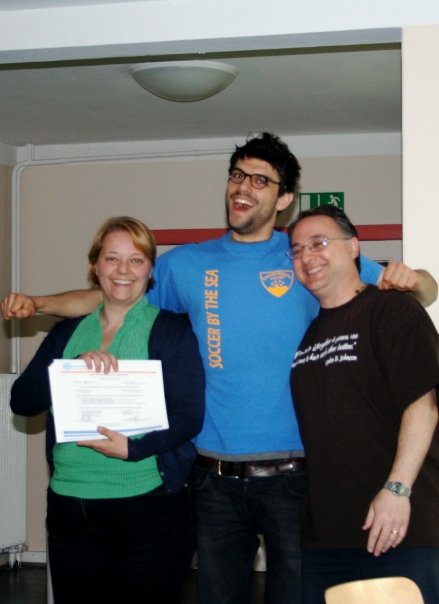
I spent a year in San Francisco, USA in 2001/2002 as part of a research scholarship programme. Durig that time, weblogs just started being big, and living near the Silicon Valley, I surely got a glance of cutting edge web-nerdism. Everyday when I came to work I opened my browser and had a list of about 20 blogs (mostly from people living in SF, that recommended restaurants, day trips, or just wrote about their daily lives) that I opened and checked one by one for updates. This process took ages, and often, nothing new was to be found.
Today RSS-feeds alow anybody to subscribe to any dynamic website he wants to: You simply add a URL to a feed-reading software - now all you have to do is check the software for new updates. There are a bunch of Feedreaders you can download to your computer, but I personally am a big fan of browser-based Google Reader.
Google Reader takes one minute to set up, and there you go, with your personal newspaper. You can even sort CISV-related news items into a specific folder. You can also recommend posts to friends, who in turn will have these posts show up in their reader. Or e-mail good items to others (Gmail, if you use it, integrates beautifully).
Best of all, you will never miss a new post on FTB again...!
Here's a list of CISV-related RSS feeds to get you started:
- http://www.absolutpicknick.de/mt/cisv_from_the_balcony/atom.xml
- http://adamanddoris.blogspot.com/feeds/posts/default
- http://www.ijb.cisv.org/ijb/news.rdf
- http://njrgreatbritain.blogspot.com/feeds/posts/default
- http://cisvmosaic.blogspot.com/feeds/posts/default
- http://www.ijb.cisv.org/cisvshirts/atom.xml
- http://www.absolutpicknick.de/mt/cisv_from_the_balcony/comments.xml
- http://gdata.youtube.com/feeds/base/users/gapcast/uploads
- http://mosquitotactics.blogspot.com/feeds/posts/default
- http://superuseless.blogspot.com/feeds/posts/default



